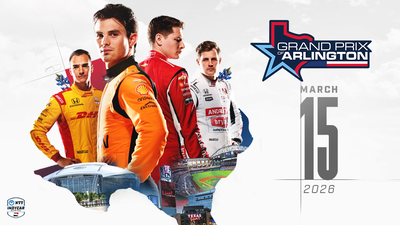A weekend in the life of a Penske tyre technician.
While the average IndyCar Series spectator may not realize the importance and depth of the tyre technician's roles and responsibilities, you can be assured there's never a slow moment for John Turpin and Josh Sides, the tyre technicians for Marlboro Team Penske teammates Sam Hornish Jr and Helio Castroneves.
Their responsibilities begin as soon at the Marlboro Team Penske transporters pull into the racetrack on set-up day.
While the average IndyCar Series spectator may not realize the importance and depth of the tyre technician's roles and responsibilities, you can be assured there's never a slow moment for John Turpin and Josh Sides, the tyre technicians for Marlboro Team Penske teammates Sam Hornish Jr and Helio Castroneves.
Their responsibilities begin as soon at the Marlboro Team Penske transporters pull into the racetrack on set-up day.
"The first thing we do as soon as we get to the track is bring all of our wheels over to Firestone so that they can be mounted," explains Sides. "It's handled on a first-come, first-served basis so the faster we get over to them, the sooner we get the tyres back."
Once the tyres come back from Firestone, the air is let out of each of the eight sets of tyres allotted for an average race weekend. Then the tyres are filled with nitrogen and their weights are labelled after being balanced by Firestone. As soon as they are balanced, Sides and Turpin calibrate each of the eight sets to the same exact pressure.
While each tyre in each set is at the same pressure as the other eight corresponding tyres, the four tyres in a given set are not necessarily set to the same pressure. There are different pressures for each position - the left front, left rear, right front and right rear are all set to varying pressures.
Once the tyres are all set to a pressure determined by the race engineer, their circumferences, or staggers, are measured. After all the tyres are measured, the eight sets are reshuffled so that the most similar tyres are in the same set, similar staggers are grouped together regardless of their original organization.
As soon as the cars get out on the track, the tyre technicians are hard at work in the pits making sure each given set of tyres is ready to be used at any time. In addition, Turpin and Sides work closely with their respective race engineers to determine what tyre pressures the team will be using for a given stint.
Once the car comes into the pits and the current set of tyres is removed, Sides and Turpin capture the tyre pressures and staggers of the four tyres. That information is relayed to the race engineer who then determines changes that need to be made to the next set going on the racecar. In addition the tyre technicians make sure the tyres aren't cut and that the sensors are all working and the telemetry being fed to the electronics engineers is accurate.
Among the other duties of a tyre technician are making sure the tyres are laid out in corresponding position on the car and the rotation direction is clearly labelled for each of the tyre changers during pit stops.
There's a lot of pressure on the tyre technicians during each race weekend as success starts from the ground up and often times tyre wear and durability can really make a difference in a race, so it's important that they are maintained and accurately set-up.
"I also work as a fabricator for the team," said Turpin. "If anything needs to be repaired on-site during a race weekend, I work to make sure it is in working order. I do parts fabrication as well as carbon work."
As a fabricator, Turpin focuses on repairing any parts that have broken during the weekend when the team gets back to the race shop, and makes back-up parts for the upcoming race. Sides makes sure the wheels are repaired and polished. In addition, he makes sure that the sensors have new batteries and are in working order, he also makes sure the valve systems are in place and functioning as well.
So, how does one become a tyre technician?
In 1990, Turpin got his start at Penske Cars in Poole, England where he helped build cars for seven years. In 1993, Turpin used his vacation time to come to America and help the team out at the Indianapolis 500. It was then that Turpin knew he wanted to work at Penske Racing and he kept asking the team if they had any openings and finally a few years later, was hired on at Penske Racing in Reading, Pennsylvania.
Prior to his experience at Penske Cars, Turpin studied engineering in England, including a one-year program at the Industrial Training Centre.
Sides got his start in the automotive industry by working as a mechanic at a Chevrolet dealership in Iowa. He'd always had an interest in auto racing since going to the Indianapolis 500 as a kid and decided to move to Indianapolis to try and get a job with one of the teams.
In 2001, he was at the Indianapolis Motor Speedway handing out resumes when someone asked him for a ride to the airport. As it turned out, the gentleman was a pilot for Penske Corporation and he took Sides' resume to the team. A few days later Tim Cindric called Sides in for an interview, which took place in Penske's motor coach at the Brickyard. Sides got the job and has been with the team since the beginning of the 2002 season.










